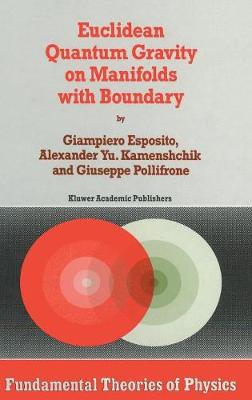Fundamental Theories of Physics
2 primary works
Book 69
This book is written for theoretical and mathematical physicists and mat- maticians interested in recent developments in complex general relativity and their application to classical and quantum gravity. Calculations are presented by paying attention to those details normally omitted in research papers, for pedagogical r- sons. Familiarity with fibre-bundle theory is certainly helpful, but in many cases I only rely on two-spinor calculus and conformally invariant concepts in gravitational physics. The key concepts the book is devoted to are complex manifolds, spinor techniques, conformal gravity, ?-planes, ?-surfaces, Penrose transform, complex 3 1 - - space-time models with non-vanishing torsion, spin- fields and spin- potentials. 2 2 Problems have been inserted at the end, to help the reader to check his und- standing of these topics. Thus, I can find at least four reasons for writing yet another book on spinor and twistor methods in general relativity: (i) to write a textbook useful to - ginning graduate students and research workers, where two-component spinor c- culus is the unifying mathematical language.
Book 85
Euclidean Quantum Gravity on Manifolds with Boundary
by Giampiero Esposito, A.Yu. Kamenshchik, and G. Pollifrone
Published 31 March 1997
This book reflects our own struggle to understand the semiclassical behaviour of quantized fields in the presence of boundaries. Along many years, motivated by the problems of quantum cosmology and quantum field theory, we have studied in detail the one-loop properties of massless spin-l/2 fields, Euclidean Maxwell the ory, gravitino potentials and Euclidean quantum gravity. Hence our book begins with a review of the physical and mathematical motivations for studying physical theories in the presence of boundaries, with emphasis on electrostatics, vacuum v Maxwell theory and quantum cosmology. We then study the Feynman propagator in Minkowski space-time and in curved space-time. In the latter case, the corre sponding Schwinger-DeWitt asymptotic expansion is given. The following chapters are devoted to the standard theory of the effective action and the geometric im provement due to Vilkovisky, the manifestly covariant quantization of gauge fields, zeta-function regularization in mathematics and in quantum field theory, and the problem of boundary conditions in one-loop quantum theory. For this purpose, we study in detail Dirichlet, Neumann and Robin boundary conditions for scalar fields, local and non-local boundary conditions for massless spin-l/2 fields, mixed boundary conditions for gauge fields and gravitation. This is the content of Part I. Part II presents our investigations of Euclidean Maxwell theory, simple super gravity and Euclidean quantum gravity.

